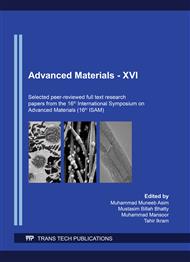p.55
p.60
p.70
p.76
p.81
p.88
p.96
p.107
p.116
Soldering to Gold Thin Films Using Indium Rich Silver Eutectic Alloys
Abstract:
Performance of the semiconductor devices is solicited by reliable metallic electrical connections. Any bad electrical connection may one of the major sources of noise and low mechanical strength, hence reducing the performance and life of the device. Apart from the successful synthesis or development of semiconductor devices or solders; the technique to carry out soldering process plays a vital role to attain reliable and reproducible electrical connections. This paper demonstrates the soldering process on gold thin films using In-3.0%Ag eutectic soldering alloys considering the three fundamental aspects of the process i.e. scavenging, wetting and aging. Scavenging and wetting behaviors of the solder were evaluated at various temperatures and different fluxes, respectively. Effect of aging was evaluated by shear testing after aging for various durations. It was observed that using the soldering temperature somewhere between 160-190 °C with 20 wt.% salicylic acid flux is favorable for better wetting and scavenging characteristics. A post solder aging (at 95 °C for 12 hours) seamed to facilitate improvement in mechanical strengths.
Info:
Periodical:
Pages:
81-87
Citation:
Online since:
February 2021
Authors:
Keywords:
Price:
Сopyright:
© 2021 Trans Tech Publications Ltd. All Rights Reserved
Share:
Citation:


